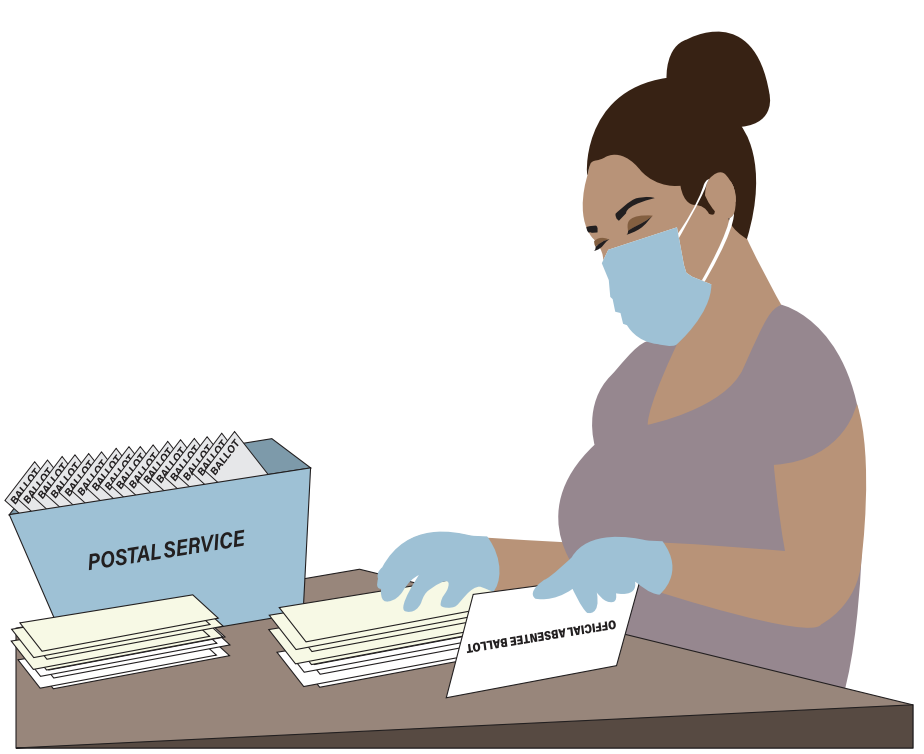On Nov. 3, I walked into the Mecosta Township Hall, put down my things, poured myself a cup of coffee and took my oath.
“I do solemnly swear that I will support the constitution of the United States and the constitution of this state, and that I will faithfully discharge the duties of the office of inspector of elections according to the best of my ability.”
I meant all 42 of those words.

After that, I presented my Election Inspector certificate of training, signed a few documents and it began. The doors opened at 7 a.m. and there was a not so socially distanced line all the way to the street.
The process begins with voters taking an application slip, filling in their name, address, date of birth and then signing it. From there, they came to my station where the Deputy Clerk would check their ID, pull up their voter profile in the E-Poll Book (EPB) and once confirmed, the EPB would issue them a ballot number and they would be sent to me.
From there I’d find their ballot number, slide it into a secrecy sleeve and give the same speech I gave almost a thousand times that day.
“So here’s your ballot, since this is a general election, you can vote either split or straight ticket, be aware there is a back-side to your ballot, that is the non-partisan section, so if you voted straight ticket, you still need to fill out the back side if you so choose. Also, please make sure you’re darkening in your bubbles fully or the tabulator may send your ballot back to you. Have a nice day.”
This is how it went for 13 hours aside from three 15-minute lulls where we crammed in bathroom breaks and hopefully, some food.
We also had incredible first-time voter turnout. We were also registering people left and right who decided last minute that they wanted to participate. It was amazing to witness.
There were some notable situations, though. Many people with Trump 2020 masks had to be asked to reverse them. Michigan campaign law states that no campaigning for any candidate may take place within 100 feet of a polling location. The most notable of these situations was when a candidate on the ballot came in decked out in campaign gear for himself and for Trump. So much so that he had to leave and return once he’d changed.
We were, in my opinion, lucky to only have one challenger come to our polling location. She was walked in, stood behind my station for about 90 seconds and then left.
Towards the end of the night, we started to go into mild panic mode as we had used every single 1B ballot (ballots for Stanwood Village residents to select their village president and board members) and were quickly running out of 1A general ballots. Luckily, we were able to move village voters to the VAT or Voter Assist Terminal, which is just an iPad hooked up to a printer. Our very last voter used our very last general ballot and that was a bit shocking.
“I expected a larger turnout than usually and ordered more ballots than I actually thought I would need, but we just barely made it,” said Lois Brennan, Mecosta Township Clerk.
Once the polls closed is when the real work began. We started out by checking the numbers from the EPB against the numbers recorded on the tabulator. If those do not match up in an explainable way (for instance, a ballot being slotted into the auxiliary bin because it needs to be duplicated because of a problem) we have to automatically start a hand count.
Once those numbers are confirmed to equal out, the Clerk pulls the tapes from the tabulator. We must confirm that those numbers match and add the votes that were not accurately counted by the tabulator to the tap totals. (Adding in the votes that otherwise wouldn’t be on the tape like the ballots from the aux bin.) Once these numbers are confirmed accurate, every election inspector must sign them.
After this, we empty the tabulator, check to see if there are any valid write-in votes, (not all write-in votes are accepted, you must write in a candidate that was high enough in the polls to be considered, but not high enough to get their own space) and then we duplicate any ballots that were unable to be read by the machine. This is done by a team that has one republican and one democrat. One reads while the other fills in the ballot.
Once these steps are completed, all inspectors have a chance to look through all of the documentation, then sign it all. Then, the Clerk seals all of the containers in front of all inspectors and one from each party signs off on that.
Once all of these steps are completed, (there are a few others, but for brevity sake, I have left them out as it’s just more paperwork and more signatures) a team drives the sealed containers to the county Clerk for her certification process and we wait for the all-clear call. After this, we are able to finally go home after a 20 hour day.
Reflecting on this experience, it was eye-opening. I honestly did not know the extent of this process and experiencing it firsthand was amazing.
I would like to say though, it is a bit offensive to me that people are screaming “FRAUD” left and right, including the sitting President. Like I mentioned, I took my job incredibly serious, and to be quite frank, I did not make enough working an election to justify possible prison time for tampering and all of my co-workers were in agreement about that.
All in all, this was a long and grueling process, but I am so glad that I participated. I learned so much and I will be back come mid-terms in 2022.
